Skin
Does Imiquimod Damage Healthy Skin?
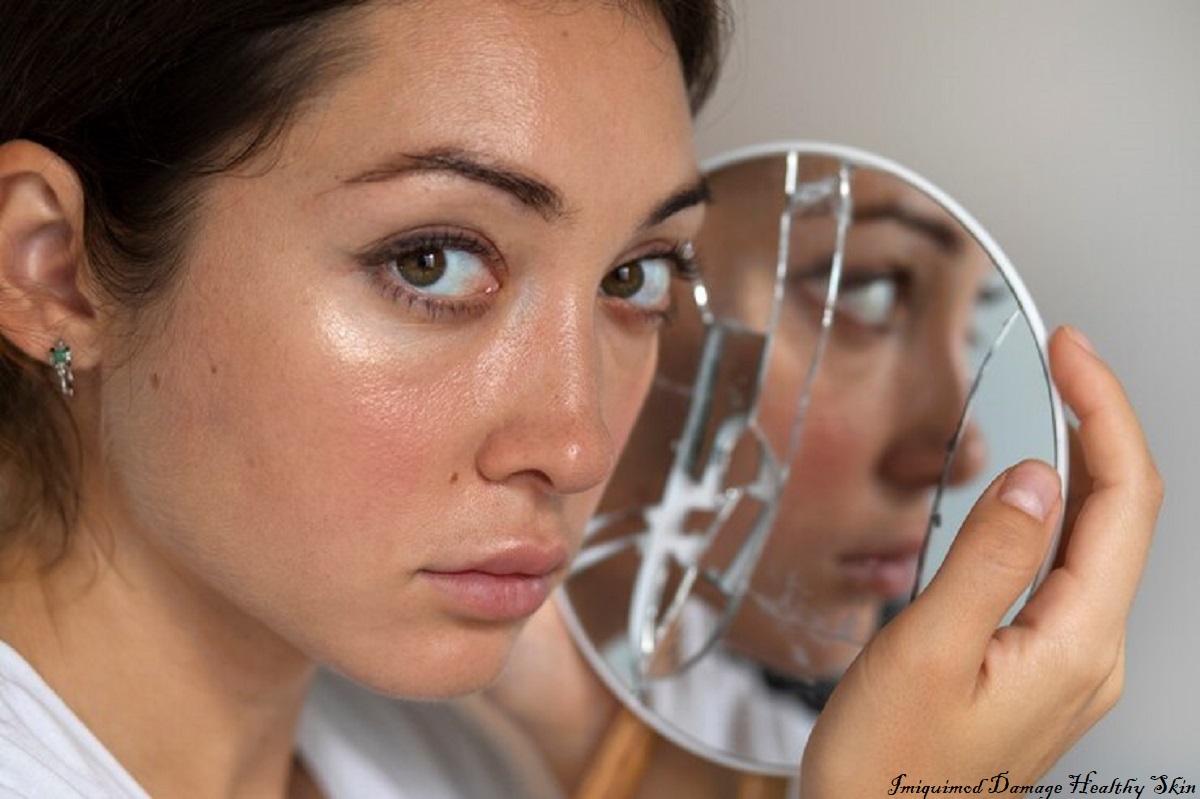
Imiquimod Damage Healthy Skin: A topical drug called imiquimod is frequently prescribed to treat some skin disorders, including genital warts, superficial basal cell carcinoma, and actinic keratosis. To help the body identify and eliminate aberrant cells, it stimulates the immune system to release cytokines and other immune molecules. Despite its well-established efficacy, there are worries about how it may affect healthy skin, especially in the vicinity of the application site. In addition to discussing what users should know before beginning treatment, this article explores whether imiquimod can harm healthy skin.
How Imiquimod Works
Imiquimod falls under the category of immune response modifiers. Instead of killing aberrant cells directly, it triggers the immune system to do the job. When applied, it promotes the release of cytokines such as tumor necrosis factor-alpha and interferon-alpha. These chemicals encourage inflammation, which aids the immune system’s ability to recognize and eliminate aberrant or malignant cells. It is used to treat diseases like actinic keratosis and some types of skin cancer because of this.
Potential Side Effects of Imiquimod
Because imiquimod works by stimulating an immune response, it’s not uncommon for users to experience side effects in both the treated and surrounding areas. The most common side effects include:
Redness
Swelling
Erosion or ulceration
Scabbing and crusting
Pain or discomfort
Itching
Dryness
These symptoms usually occur within a few days of starting treatment and are an expected part of the immune response. In many cases, they indicate that the medication is working to remove abnormal cells. However, these side effects can sometimes extend to healthy skin, causing concern for users.

Potential Side Effects of Imiquimod
Does Imiquimod Affect Healthy Skin?
When using imiquimod, it’s crucial to understand that the inflammatory response it triggers is not confined to abnormal cells alone. The medication may also cause inflammation in nearby healthy skin, particularly if applied too broadly. This can lead to temporary redness, irritation, and other side effects in areas otherwise unaffected by the underlying condition.
The Impact on Healthy Skin
While imiquimod is not designed to damage healthy skin, it can cause several temporary side effects in surrounding areas. These include:
Inflammation:
Since imiquimod activates the immune system, nearby healthy skin can become inflamed. This often results in redness, swelling, or a burning sensation. While uncomfortable, this reaction is typically temporary and subsides after the treatment course ends.
Erythema (Redness):
Redness is one of the most common side effects. It often spreads beyond the application area to surrounding healthy skin. Though alarming, this redness usually fades after the course of treatment is completed.
Erosion and Ulceration:
In severe cases, imiquimod can cause healthy skin to erode or develop ulcers. This tends to occur when the medication is used over large areas or for extended periods. Most erosions heal without scarring, but they can be painful and concerning.
Itching and Burning:
These sensations can also occur in healthy skin surrounding the treated area. This is due to the immune system’s activation, which increases sensitivity and irritation in the skin.
Preventing Damage to Healthy Skin
Although some irritation to healthy skin is expected when using imiquimod, there are ways to minimize potential damage. Here are some tips for applying imiquimod safely:
Apply Precisely:
Always apply imiquimod exactly as prescribed by your healthcare provider. Use a cotton swab or your fingertip to apply the medication only to the affected area. Avoid spreading it onto surrounding healthy skin.
Use a Barrier:
Some patients find it helpful to use a protective barrier cream, such as petroleum jelly, around the treatment area. This helps protect nearby healthy skin from coming into contact with the medication.
Follow Dosing Instructions:
Use the medication only as often as prescribed. Applying more than the recommended amount won’t speed up the healing process and may increase the likelihood of irritation.
Avoid Sun Exposure:
Imiquimod-treated skin is more sensitive to sunlight. Avoid excessive sun exposure and wear protective clothing or sunscreen to prevent further irritation or damage.
Manage Symptoms:
If the surrounding skin becomes too irritated, consult your doctor. They may recommend adjusting your treatment schedule or using topical steroids or soothing creams to manage the symptoms.
When to Seek Medical Advice
While most side effects of imiquimod are manageable, there are situations where medical advice is necessary. Contact your healthcare provider if:
The skin irritation becomes severe or unbearable.
Large areas of healthy skin develop ulcers or erosions.
There is a significant amount of bleeding, pain, or infection at the treatment site.
The symptoms persist even after stopping the treatment.
In some cases, doctors may recommend stopping or pausing treatment if the irritation becomes too severe. They may also suggest alternative treatments if imiquimod proves too harsh for your skin.
Long-term Effects on Healthy Skin
The majority of imiquimod’s adverse effects, such as skin irritation, are transient and go away after treatment is finished. Usually, the skin recovers without sustaining any long-term harm. Rarely, though, there might be more long-lasting adverse effects like pigmentation changes or scarring, particularly if the skin becomes severely eroded or ulcerated.
It’s worth noting that these cases are uncommon, and the vast majority of patients see their skin return to normal within a few weeks of finishing treatment. Additionally, the benefits of treating skin conditions like actinic keratosis or superficial basal cell carcinoma often outweigh the temporary discomfort and risk of mild damage to healthy skin.
Conclusion
Imiquimod is a powerful medication that effectively treats certain skin conditions by activating the immune system. While it can cause temporary irritation and damage to the healthy skin surrounding the treatment area, these side effects are generally manageable and resolve after treatment ends. Most patients experience mild to moderate reactions, such as redness or swelling, which indicate the immune system’s activity. Severe reactions are rare but possible, especially if the medication is applied improperly or used for extended periods.
To minimize the risk of damaging healthy skin, it’s important to apply the medication precisely and follow your doctor’s instructions closely. If side effects become too severe, seeking medical advice is crucial to ensure that the treatment is adjusted or stopped as needed.
Ultimately, while imiquimod can irritate healthy skin, the potential benefits in treating skin conditions often outweigh these temporary side effects. With careful application and management, imiquimod can be a safe and effective option for many patients dealing with abnormal skin growth.
Skin
Effortless Techniques for Eliminating Skin Tags at Home
Skin tags, while harmless, can be a source of annoyance due to their appearance or placement. These benign protrusions often prompt individuals to seek economical and straightforward ways to eliminate them without professional intervention. This guide delves into safe and practical methods to remove skin tags from the comfort of your home.
Understanding Skin Tags and Their Origins
Medically termed acrochordons, diminutive, pliable growths that commonly develop in regions where rub against themselves, such as the neck, underarms, or eyelids. Factors like friction, hormonal fluctuations, or hereditary predispositions contribute to their occurrence.

Can You Safely Remove at Home?
Removing skin tags at home can be safe if you use proper methods and precautions. However, it’s important to consult a healthcare professional to confirm that the growth is indeed a skin tag.
Essential Precautions Before Removing Skin Tags
- Cleanse the area thoroughly to prevent infections.
- Use sterilized tools if needed.
- Avoid tags near sensitive areas like the eyes.
- Do not attempt to remove large or inflamed tags at home.
Harnessing Tea Tree Oil for Skin Tag Removal
Tea tree oil’s antifungal and antiviral properties make it an excellent home remedy.
Steps:
- Clean the affected area.
- Apply tea tree oil using a cotton swab.
- Cover with a bandage overnight.
- Repeat daily until the tag naturally falls off.
Using Apple Cider Vinegar for Tag Elimination
Apple cider vinegar helps desiccate skin tags, making them fall off naturally.
Steps:
- Soak a cotton ball in apple cider vinegar.
- Secure it to the tag with a bandage.
- Please keep it in place for a few hours daily.
Garlic: Nature’s Solution to Skin Tags
Garlic’s enzymes break down skin tag tissues.
Steps:
- Crush fresh garlic into a paste.
- Apply to the tag and cover with a bandage.
- Leave it overnight and rinse in the morning.
Over-the-Counter Remedies for Skin Tag Removal
Pharmacies stock products like creams containing salicylic acid for skin tag removal. Follow instructions precisely to avoid irritation.
Efficacy of Home Freezing Kits
DIY cryotherapy kits are designed to freeze and detach skin tags. Carefully follow guidelines to avoid damage to surrounding skin.
Dental Floss Method: A Frugal Alternative
Tie sterilized dental floss around the tag’s base to cut off blood flow, leading to the tag’s detachment.
The Unlikely Aid of Banana Peels
Banana peels contain enzymes that may help dissolve skin tags.
Steps:
- Cut a piece of peel and place it inside-out on the tag.
- Secure it with a bandage overnight.
- Repeat daily until results appear.
When to Seek Medical Advice
See a doctor if a skin tag is substantial, painful, or changes appearance. Avoid removing tags near sensitive areas or signs of infection.

Post-Removal Care and Healing Tips
- Keep the treated area clean and dry.
- Apply antiseptic cream to prevent infections.
- Avoid picking at the site to encourage healing.
Conclusion
Removing skin tags at home is an economical and viable option using safe and effective methods. These techniques, from natural remedies like tea tree oil to store-bought solutions, help restore your skin’s smoothness. Prioritize safety and consult a professional when in doubt.
FAQs
- Do skin tags reappear after removal?
- Yes, new ones may form in friction-prone areas.
- Is the process painful?
- If done carefully, it causes minimal discomfort.
- Are skin tags contagious?
- No, they are not.
Skin
Eliminate Skin Tags with These Simple Home Remedies
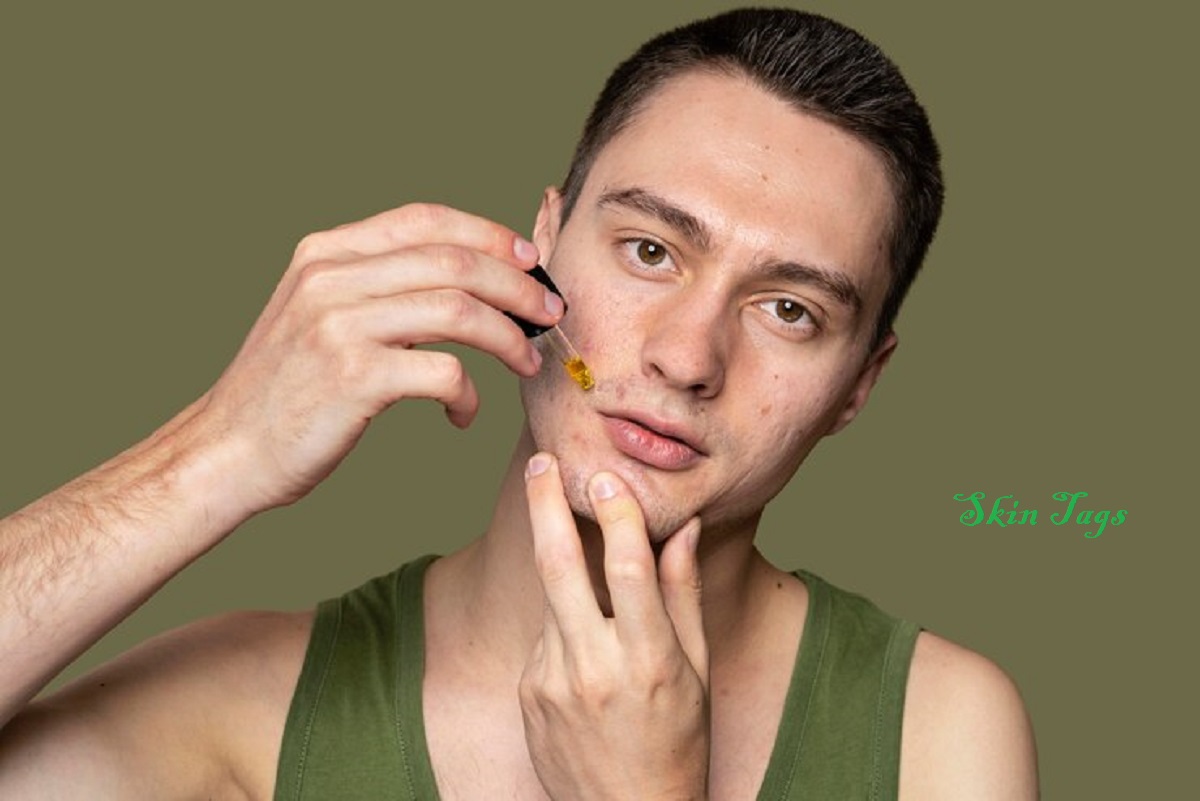
Skin tags, those small, harmless growths that can appear on your body, may seem like nothing more than cosmetic issues. If you’ve noticed one of these pesky bumps on your neck, under your arms, or even on your eyelids, rest assured you’re not alone. But don’t worry! Although these imperfections might not be visually appealing, they aren’t harmful to your health, and there are plenty of natural methods to remove them without visiting a doctor. This guide will introduce you to some effective ways to get rid of skin tags naturally.
What Are Skin Tags and How Do They Occur?
Medically referred to as acrochordons, skin tags are small, soft, non-cancerous growths that hang off the skin. They usually develop in areas where skin rubs against skin, such as the neck, armpits, eyelids, groin, or under the breasts. These growths vary in size and generally feel like soft, fleshy lumps.
Skin tags often arise from friction, aging, obesity, or genetic factors. Individuals over 40, as well as those who are overweight or have certain medical conditions like diabetes, are at a higher risk of developing them.

Are Skin Tags Harmful or Just a Nuisance?
Typically, skin tags are not dangerous and are non-cancerous. They don’t represent any significant health risks. However, they can be annoying, especially if they rub against clothing or jewelry. For some, they can cause discomfort or embarrassment, prompting a desire for removal. It’s important to remember that medical attention is only necessary if a skin tag becomes painful, bleeds, or shows signs of infection.
Why Choose Home Remedies for Skin Tags?
Home remedies offer a safe, cost-effective, and easy way to deal with skin tags without needing to see a dermatologist. Many over-the-counter solutions or professional procedures can be pricey, while natural remedies allow you to manage the situation from your own home. Still, it’s vital to use these remedies cautiously and ensure the method you select suits your skin type.
Precautions to Take Before Trying Home Remedies
Before trying any home remedy, it’s wise to take some precautions. Always perform a patch test to check for allergic reactions, especially when using ingredients like tea tree oil, garlic, or apple cider vinegar. If the skin around the tag becomes irritated, stop the treatment right away. If you have any doubts about a method, consulting a healthcare provider is a smart decision.
Utilizing Tea Tree Oil for Skin Tag Treatment
Tea tree oil is well-known for its antiseptic and anti-inflammatory properties. It’s a popular natural treatment for skin tags as it can help dry them out over time. Here’s how to use it:
- Clean the area around the skin tag using warm water and soap.
- Use a cotton ball to dab a small amount of tea tree oil directly onto the skin tag.
- Let it sit for 10-15 minutes, then rinse with warm water.
- Repeat this procedure twice daily for several weeks.
Apple Cider Vinegar: A Tried-and-Tested DIY Option
Apple cider vinegar (ACV) is another favored home remedy for skin tags. Its acidic nature helps break down the tissue of the tag. Here’s how to use it:
- Soak a cotton ball in apple cider vinegar.
- Place it over the skin tag and secure it with a bandage.
- Keep it on for 10-15 minutes, then rinse the area with water.
- Repeat this twice daily for 1-2 weeks.
Using Garlic to Naturally Remove Skin Tags
Garlic has natural antimicrobial properties and can help in eradicating skin tags. To use garlic:
- Mash a small garlic clove and apply it directly to the skin tag.
- Cover it with a bandage and leave it overnight.
- In the morning, remove the bandage and clean the area thoroughly.
- Repeat this process every night until the skin tag falls off.
Aloe Vera for Skin Care:
Aloe vera is well-regarded for its soothing and healing properties. It can help lessen irritation and inflammation around skin tags. Here’s how to apply it:

- Extract fresh gel from an aloe vera leaf.
- Apply the gel to the skin tag and let it sit for 30 minutes.
- Rinse the area with warm water.
- Repeat twice a day for a few weeks.
Castor Oil and Baking Soda Paste: A Potent Combination
The blend of castor oil and baking soda creates a strong paste that can aid in drying out skin tags. To use this paste:
- Combine equal parts of castor oil and baking soda to form a thick mixture.
- Apply the paste to the skin tag and cover it with a bandage.
- Leave it on overnight and wash it off in the morning.
- Repeat this nightly for 1-2 weeks.
Over-the-counter options for Skin Tag Removal
Several over-the-counter products are available for removing skin tags, including creams, freezing kits, and other topical solutions. While these options are convenient, it’s important to adhere to the instructions carefully and consult a dermatologist if you have any questions.
Safe Home Freezing of Skin Tags
Freezing skin tags can be done at home using a freezing kit purchased at pharmacies. This method works by freezing the skin tag tissue, causing it to fall off. However, precise adherence to the directions is crucial to prevent damage to the surrounding skin.
The Dental Floss Technique: Simple and Effective
The dental floss method involves securely wrapping dental floss around the base of the skin tag to cut off its blood supply. After a few days, the skin tag will dry up and eventually detach. Be careful not to tie the floss too tightly to avoid skin damage.

Banana Peels: An Unusual Yet Effective Approach
Banana peels contain enzymes that may help in the removal of skin tags. To utilize a banana peel:
- Cut a small piece of peel and place it over the skin tag.
- Secure it with a bandage and leave it on overnight.
- Repeat this nightly until the skin tag falls off.
Aftercare Following Skin Tag Removal
After a skin tag is removed, caring for the area is crucial to prevent infection. Apply a gentle moisturizer and keep the skin clean. Avoid scratching or irritating until it has fully healed.
When to Consult a Professional About Skin Tags
If your skin tag becomes painful, changes color, or shows symptoms of infection (like redness, swelling, or pus), seek medical advice. Additionally, if you’re unsure whether a growth is a skin tag or something else, it’s best to consult a healthcare professional.
Common Myths About Skin Tag Removal
There are numerous misconceptions surrounding skin tag removal. For example, some believe that removing one skin tag will lead to more appearance. This is false; removing a skin tag does not cause others to form. Always rely on credible information and proven methods when addressing skin tags.
The Benefits of Home Skin Tag Removal
Removing skin tags at home is convenient, cost-effective, and efficient. It provides greater control over the process and helps avoid expensive medical procedures.
Preventing Skin Tags: Long-Term Care Tips
To reduce the chances of developing future maintain a healthy weight, minimize skin friction, and keep your skin moisturized. If you observe any new growths, take action promptly to prevent them from enlarging or multiplying.
Frequently Asked Questions
Are skin tags contagious?
No, skin tags are not contagious and are caused by friction, aging, or genetics.
Can I remove a skin tag at home?
Yes, several home remedies such as tea tree oil or apple cider vinegar can aid in the removal of skin tags.
Do skin tags always come back?
Skin tags may not return after removal, but new ones can form in other areas due to similar reasons.
Can a skin tag be cancerous?
Skin tags are benign and do not become cancerous. Nonetheless, if you notice any unusual changes, it’s advisable to consult a doctor.
How long does it take for home remedies to remove a skin tag?
Home remedies can take anywhere from a few days to a couple of weeks to yield results. Consistency is crucial.
Skin
Natural Face Moisturizers for Rosacea: Reviews & Buyers Guide
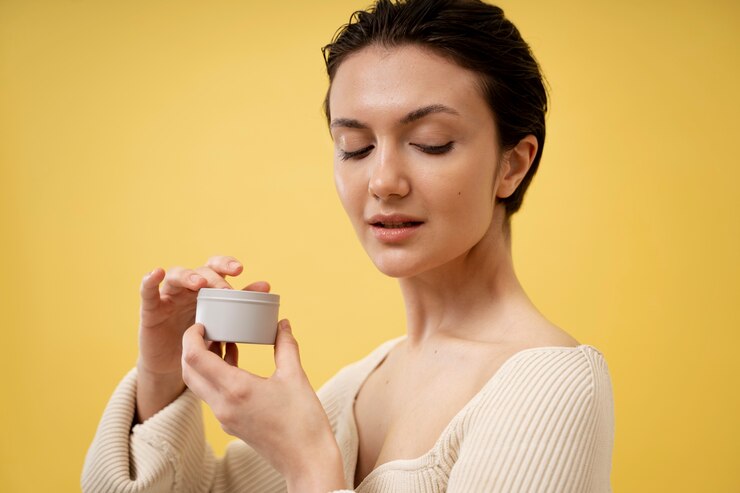
Advantages of Using a Natural Face Moisturizer
1. These creams can help to reduce wrinkles:
2. Moisturizers are ideal for your skin:
3. The oils protect your skin:
4. The creams shrink enlarged pores:
5. The moisturizers down rashes:
What to Consider When Looking for Moisturizers for Rosacea
Moisturizing your skin is a great way to protect your skin when treating rosacea. Some natural face moisturizers offer protection against environmental factors that exacerbate rosacea symptoms.
Before you settle on a moisturizer, read this review carefully, and always talk to your dermatologist.
- Avoid moisturizers that have too many fragrances. You should also avoid harsh cleansers, or any products that contain alcohol as they may contribute to rosacea outbreaks.
- Watch out for rosacea irritants found in different skin care products. They include alcohol, fragrance, Hazel, eucalyptus oil, peppermint and menthol. Other things you want to avoid include exfoliating agents, astringents and anything else that’s harsh for sensitive skin.
- Test any product on a peripheral area before you apply it on your skin. That will help you avoid any product that you react to and take note of the ingredients. Rosacea irritants vary from one person to another, and your own skin’s reaction should be your guide.
Mistakes to Avoid When Applying Moisturizers
Over saturating your skin
Rubbing the skin too hard
Not allowing the cream to sink in
Forgetting the area under the eyes
Forgetting the neck area
What you Should Know Before Using Moisturizer for Rosacea
1. Premature wrinkles:
2. Your complexion may be dull and flaky:
3. Your layer of protection may become lost:
4. Your skin may become itchy:
Read the Label
Sensitive skin
Best organic face lotion for dry skin: Skin care products are characterized to suit different skin types. Common skin types include oily, dry, combination, and sensitive. Rosacea makes your skin dry; that doesn’t necessarily mean you should use moisturizers for people with dry skin. They contain too much oil, emollients and humectants that can be hard on your skin. The irritant potential outweighs the potential hydrating properties you get. Choose a mild moisturizer formulated for sensitive skin since they moisturize your skin and are gentle.
Bland moisturizers
These moisturizers are free from harsh ingredients that irritate the skin. You want to avoid anything that can trigger a flare-up. Avoid using moisturizers that have redundant components. The best products alleviate your skin’s dryness. Avoid moisturizers with alcohol, fragrances and related additives.
Avoid acne treatment products
Regardless of whether your rosacea is accompanied with pimples, it is not advisable to use moisturizers formulated for treating acne. They have ingredients such as benzoyl peroxide and salicylic acid that can dry your skin. Consult a dermatologist for the best way to treat acne while dealing with rosacea.
Calming ingredients
Try using moisturizers that have a calming effect on your skin to reduce the symptoms of rosacea. Chamomile, aloe and green tea are natural products that have a soothing effect. That will help to lessen the redness and inflammation you could be experiencing.
Sunscreen
Exposure to the sun is a known trigger for rosacea flare ups. Choose a moisturizer with an SPF 15 protection or higher or stay covered!
5 of the Best Moisturizers for Relieving Rosacea Reviewed
1. Miravage Facial Redness and Rosacea Relief Cream & Anti-Aging Moisturizer Serum
PROS
- You can wear it under your makeup
- Offers anti-aging benefits
- There is no greasy feeling
- Quickly absorbed into your skin
CONS
- Has a light scent that lingers
2. Era Organics Face Cream
PROS
- 60-day money back guarantee
- Non-greasy formula
- Has anti-aging properties
CONS
- Can be a bit expensive
3. Aveeno Eczema Therapy Moisturizing Cream
PROS
- Recommended by dermatologists
- Fast acting formula that hydrates and soothes
- Steroid and fragrance free
- Reasonably priced
- Great packaging for easy use
CONS
- Relatively thick formula feels heavy during application
4. HoneySkin Organics Aloe Vera Ultimate Face and Body Cream
PROS
- Organic product
- Doesn’t have fillers like mineral oils, parabens or water
- Light non-greasy formula
- No fragrance
CONS
- A little bit costly
- Few people allergic to some ingredients
5. La Roche-Posay Soothing Moisturizer
PROS
- Fragrance free
- Reduces chances of skin dryness
- Easy to apply light texture
CONS
- It is relatively expensive
Conclusion
Dermatologists still have a long way to go with regards to rosacea. Scientists are still learning what its real causes are and the best way to treat it. While there may be some genetic factors, the environment has a big contribution as well. There are different underlying factors causing rosacea. People battling it should make choices that eliminate the risk of outbreaks. Take note that your diet can trigger rosacea flare ups. You want to avoid spicy foods, hot foods and drinks, and alcoholic beverages. But a moisturizer designed for those suffering from rosacea can definitely help for some. As per the review, the Honeyskin Face & Body Cream stands out to me as the best moisturizer for rosacea here. Just remember that everyone’s skin reacts differently. Trial & error and speaking to your dermatologist are a couple ways you can figure out which cream will work for your skin.
-
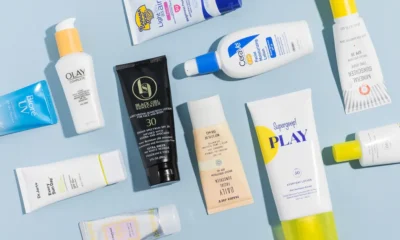
 Skin2 days ago
Skin2 days agoNatural Oil-Free Face Moisturizer Reviews & Buyers Guide
-

 Skin9 months ago
Skin9 months agoAbout Face Beauty: Tips for Enhancing Your Natural Beauty
-
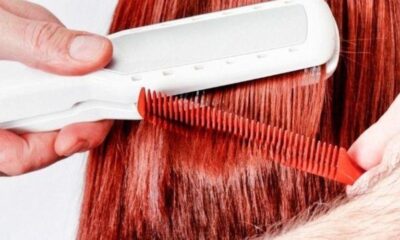
 Hair10 months ago
Hair10 months agoDoes a Flat Iron Kill Lice? Fact or Myth?
-
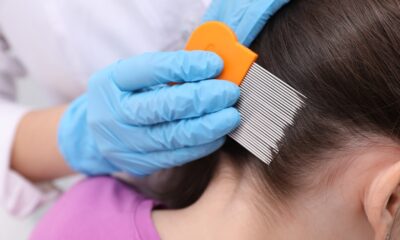
 Hair2 months ago
Hair2 months agoDoes a Flat Iron Kill Lice? Fact or Myth?
-

 Skin1 week ago
Skin1 week agoNeutrogena Naturals Multi-Vitamin Nourishing Face Moisturizer Review
-
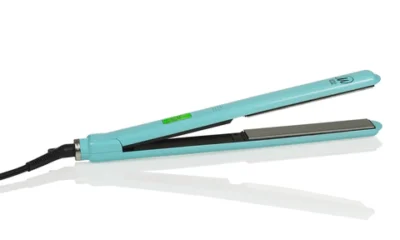
 Hair1 week ago
Hair1 week agoTitanium Flat Iron vs Ceramic
-

 Hair10 months ago
Hair10 months agoFunction of Beauty: Personalized Hair Care for Your Unique Needs
-

 Skin9 months ago
Skin9 months agoBeautiful Nails: Tips and Tricks for Healthy and Gorgeous Nails

